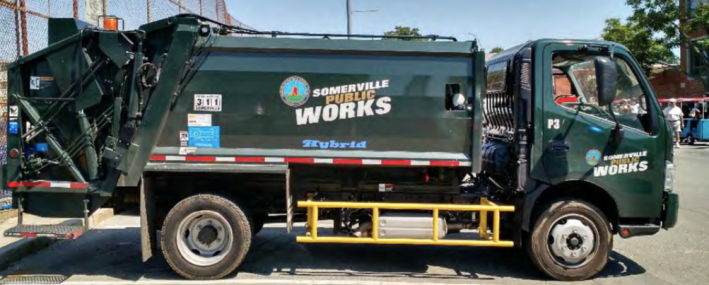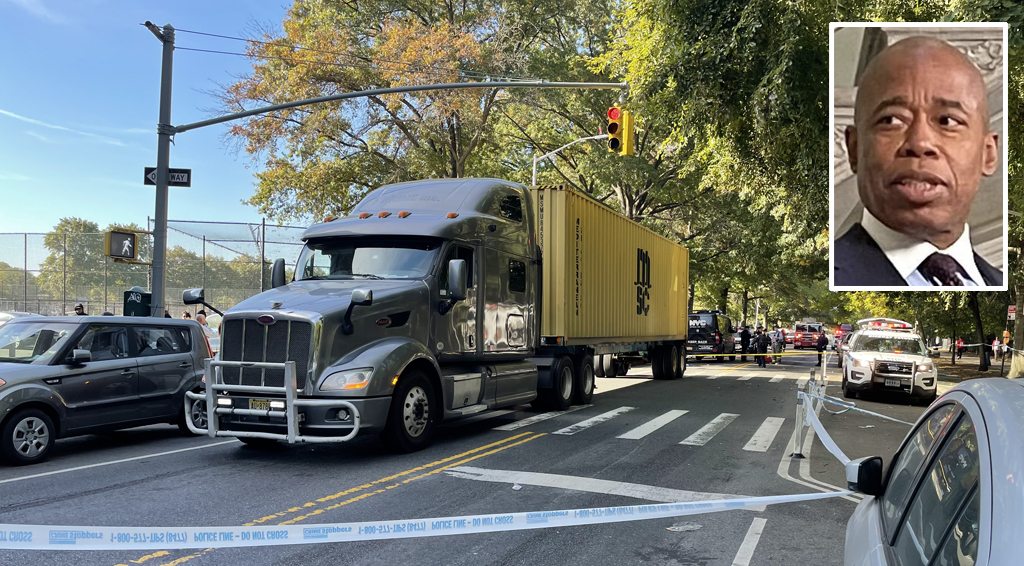Fleet week came early this year.
In a new executive order to be announced later today, the Adams administration will take strides to improve the safety of tens of thousands of trucks operated by both the city and its many contractors.
Under the order, contractors doing at least $2 million in business with the city and using 10,000-pound vehicles must:
- either employ "high-vision truck" models (where the cab is over the front of the vehicle) or outfit all trucks with "surround cameras"
- submit a "fleet-safety plan" that includes a list of vehicles and drivers, training plans, relevant technology investments, and how the company will take "corrective action" in the event that employees drive recklessly.
- ensure that all their drivers are licensed and notify the appropriate agency if any driver has his or her license suspended or is arrested due to unsafe driving.
- require its drivers to take an online or in-person safety course.
- report crashes with more than $1,000 in vehicle damage or any property damage to a city facility (some of which is already required under state law, but the information does not always get to the appropriate city agency).
- install or deploy "telematics," which are an automatic vehicle location system that tracks location and speed. A 2018 law already requires tracking for contracted school buses, but this order extends the requirement to all city contracts.
It won't be on the front page of every paper, but the executive order is crucial, given that trucks are involved in 12 percent of fatalities to pedestrians and 30 percent of fatalities to bicyclists.
Department of Citywide Administrative Services Commissioner Dawn Pinnock called the order “a major step towards safer streets for New Yorkers, and a big win for our city.”

“By codifying these requirements, we are taking a holistic approach to innovate fleet safety technologies, installing new safeguards, and utilizing training and fleet planning to help keep our bustling streets safe from automotive incidents,” Pinnock added in a statement.
With the city's truck fleet, plus roughly 10,000 school buses and 5,600 trucks used by contractors, city officials believe the executive order will improve safety on more than 23,000 trucks — the kind that are in daily operation, not just passing through.
There is some fine print in the executive order: A contractor may be allowed out of the requirements above if "implementation ... would be impracticable," meaning that the rules would "disrupt contract implementation; is infeasible for technical, operating or design reasons; or will impose undue costs."
As part of the executive order, similar safety requirements are going to be imposed on city employees, who will have to take the same online or in-person safety course. In addition:
- All agencies will make sure all its employees have valid licenses.
- All agencies must record each crash involving a city fleet vehicle.
- All new trucks purchased by the city starting on July 1 will have surround cameras or be of the "high vision" model. The Department of Citywide Administrative Services has already installed such cameras on 2,000 of the city's 7,500 trucks. A city spokesperson said that this executive order will result in the remaining trucks getting those cameras.
There's also a little loophole in the section on city employees: Agencies responsible for emergency response "may implement a separate system for monitoring of licensees and training requirements" and the NYPD "may also implement a separate system for crash tracking." The order also exempts city employees "where implementation of this section is otherwise impracticable."
Both loopholes will be evoked rarely, said a City Hall spokesperson, citing the possibility of an old or specialized vehicle that can't utilize certain technologies. Any request for an exemption would be put through a thorough review by DCAS and the Mayor’s Office of Operations, the spokesperson said.
The Adams administration has made progress on reducing reckless driving by city employees. A pilot program that put speed governors in 50 city cars was expanded to 300 last year, and late in 2023, the city received news that federal money will allow the devices to be installed on 2,000 city vehicles. That still leaves tens of thousands without it.
Any improvements in safety will save money over the long haul. In previous years, the city has spent as $145 million just to settle claims by people who have been injured or their property damaged by city employees in fleet vehicles. Between July 2021 and June 2022, the number dropped to $133 million, according to the city comptroller's most-recent report.
The average payout is now $242,000, up from $15,000 in 2012 — strong incentive to reduce crashes. But there's also the priceless savings in human cost.
"Families for Safe Streets is heartened to see the city strengthening its street safety standards for the contractors it hires,” Kate Brockwehl, the group's policy and advocacy committee co-chair, said in a statement. “We are particularly excited the city will be requiring fleet safety technology like surround cameras. We know these safety solutions will save lives in the five boroughs.”






